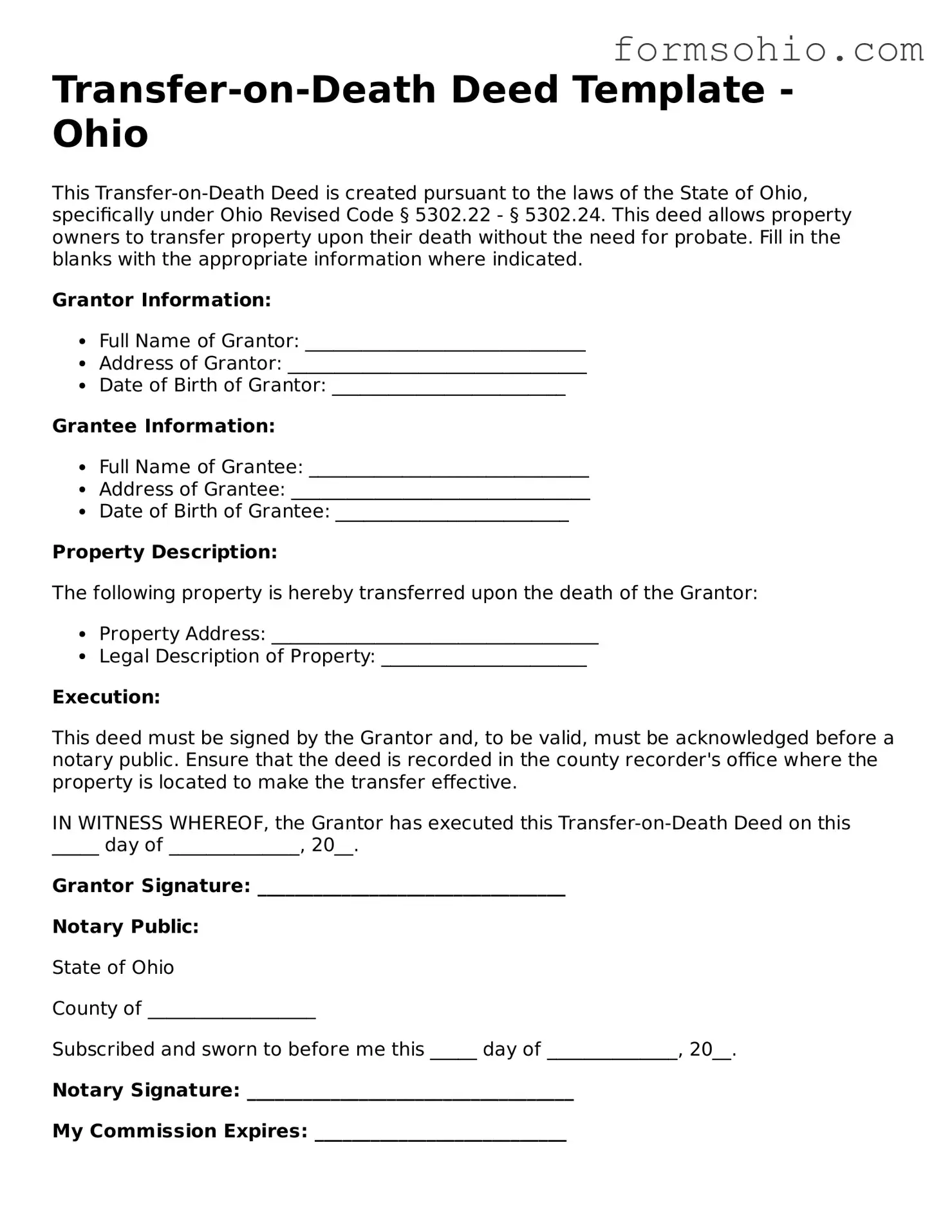Transfer-on-Death Deed Template - Ohio
This Transfer-on-Death Deed is created pursuant to the laws of the State of Ohio, specifically under Ohio Revised Code § 5302.22 - § 5302.24. This deed allows property owners to transfer property upon their death without the need for probate. Fill in the blanks with the appropriate information where indicated.
Grantor Information:
- Full Name of Grantor: ______________________________
- Address of Grantor: ________________________________
- Date of Birth of Grantor: _________________________
Grantee Information:
- Full Name of Grantee: ______________________________
- Address of Grantee: ________________________________
- Date of Birth of Grantee: _________________________
Property Description:
The following property is hereby transferred upon the death of the Grantor:
- Property Address: ___________________________________
- Legal Description of Property: ______________________
Execution:
This deed must be signed by the Grantor and, to be valid, must be acknowledged before a notary public. Ensure that the deed is recorded in the county recorder's office where the property is located to make the transfer effective.
IN WITNESS WHEREOF, the Grantor has executed this Transfer-on-Death Deed on this _____ day of ______________, 20__.
Grantor Signature: _________________________________
Notary Public:
State of Ohio
County of __________________
Subscribed and sworn to before me this _____ day of ______________, 20__.
Notary Signature: ___________________________________
My Commission Expires: ___________________________
